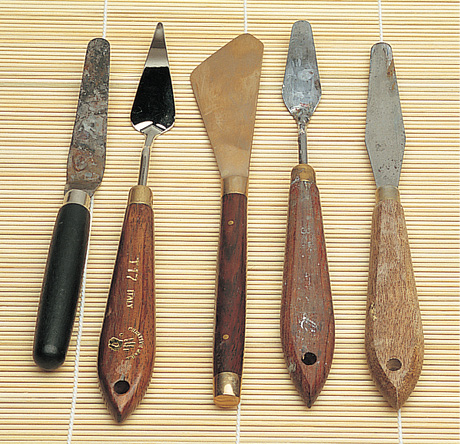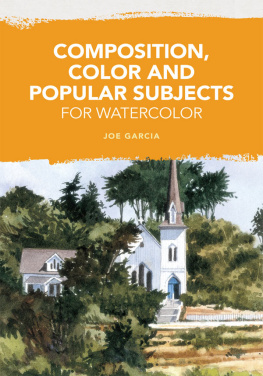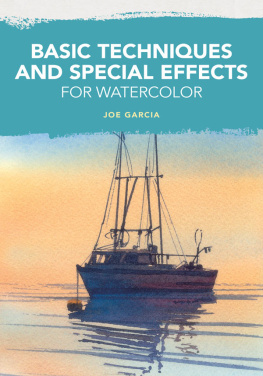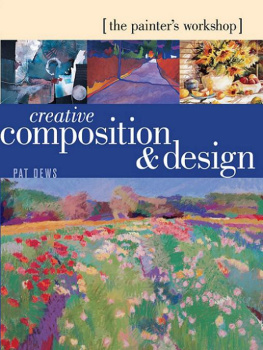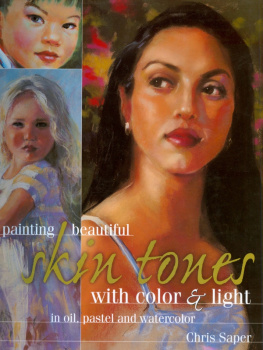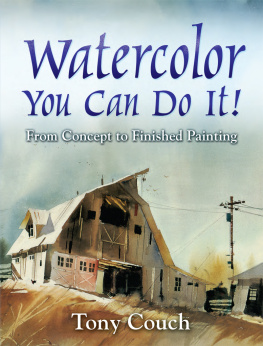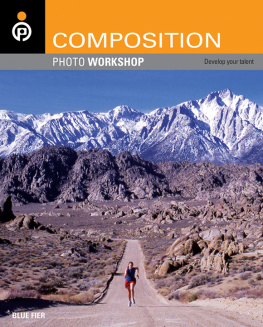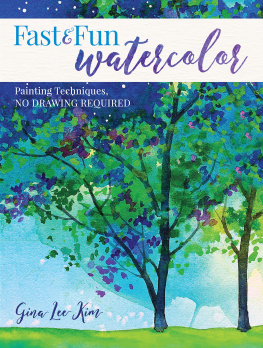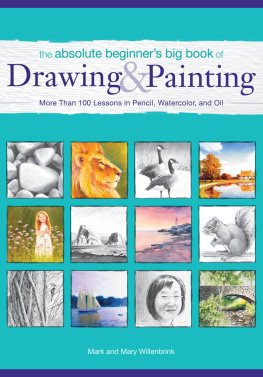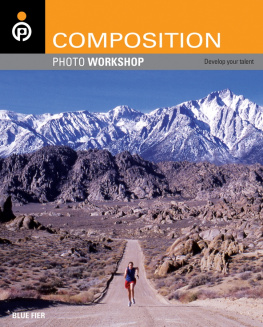Contents
COMPOSITION, COLOR AND PAINTING POPULAR SUBJECTS FOR WATERCOLOR
JOE GARCIA
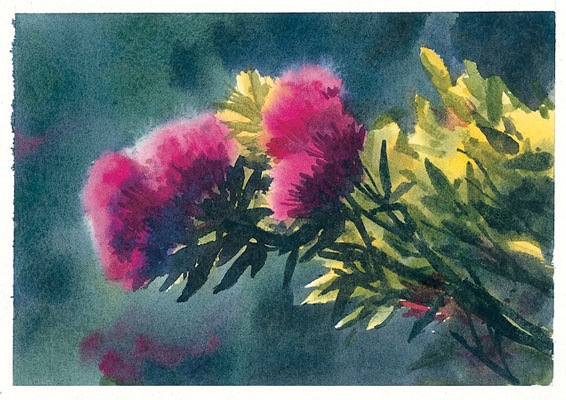
Pohutukawa (Sketch)
Watercolor on 140-lb. (300gsm) cold-pressed paper
5" 7" (13cm 18cm)
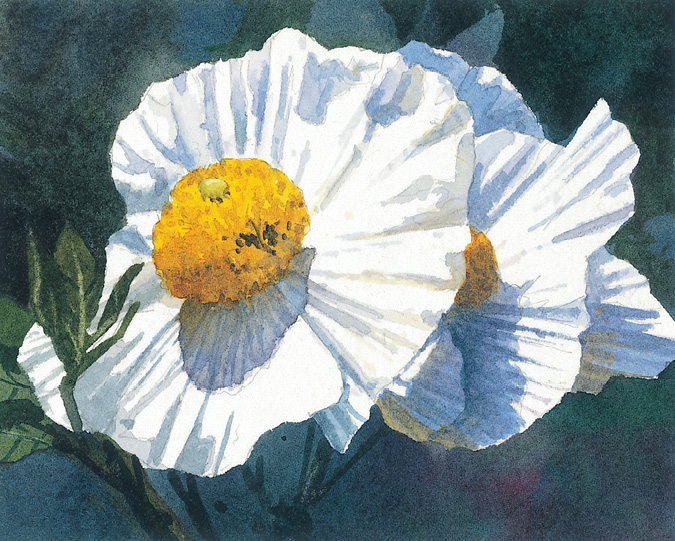
Watercolor Paints
Watercolors come in tubes, cakes or pans, pencils or liquids. They vary in price and quality, and there are many brands available. Stick to the professional quality paints, which offer consistency of color, lightfastness and a general degree of excellence.
Transparent paints (as opposed to opaque paints such as gouache) consist of pigment mixed with gum arabic, glycerin and a wetting agent. When you thin the paint with water, the glycerin and water allow the pigment to adhere to the surface of the paper. The wetting agent allows the paint to flow evenly as it is diluted.
Pan, or cake, paints come in half and full pans, individually or in kits. Kits are compact, travel well, and are useful for doing small paintings; however, it is difficult to mix enough paint for large, even washes. Cakes are small and you will use your favorite colors quickly, so have extras available.
Know Your Hues
Paint names followed by Hue (Hookers Green Hue) tend to be of a lower quality. They are made with an imitation product of the actual pigment.
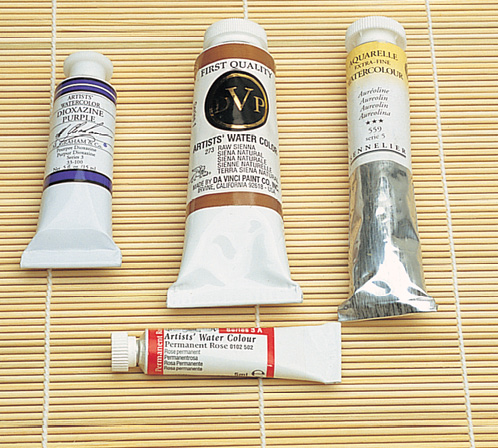
Tube Paints
Are sold as small (5ml), medium (1416 ml) and, occasionally, in large (37ml) sizes.
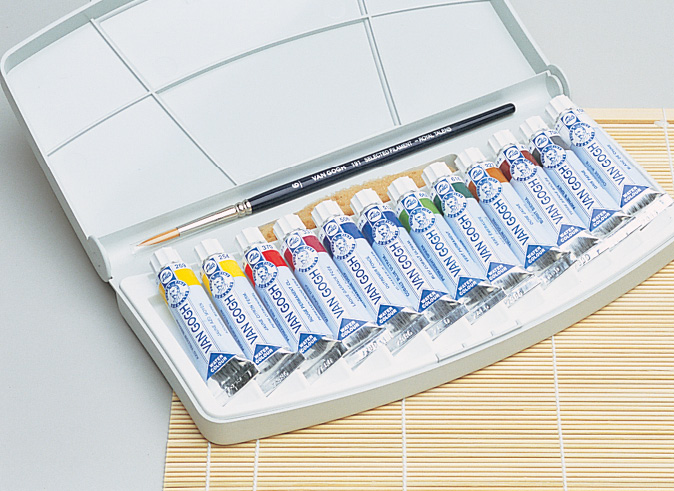
Small Traveling Palette
Palette
Palettes come in a variety of shapes and sizes. A white dish, butchers tray or cookie sheet will suffice, but a traditional covered palette is best. A good palette has large separate wells or reservoirs to store each color and a large mixing area with no divisions. The deep wells are important because they allow you to have a lot of pigment available. They also keep colors from being contaminated by adjacent colors and help you see and arrange your colors in a logical order. The open mixing area allows you to mix enough color to get rich, saturated washes.
Mixing Colors on a Palette
Make sure to always mix enough paint to avoid running out in the middle of your painting. A palette that has a large flat area is helpful for this.
Incomplete Mixing
Pull two or three colors from the palette wells and allow them to partly mix on the palette. Drag your brush through these colors and apply to your paper. The parent colors retain some of their identity while also mixing on the paper surface. Some of the parent colors remain visible, resulting in washes that are interesting and spontaneous.
Pick Your Palette
A palette influences how you paint. A good palette is one that starts you on a logical journey through your painting.
Divided mixing areas restrict mixing large pools of paint.
Large paint wells fit large brushes and are good for mixing large washes.
Flat well construction helps keep dirty color away from the pigment in the well.
Slated or round wells allow contaminated color to flow up to and around the pigment already there.
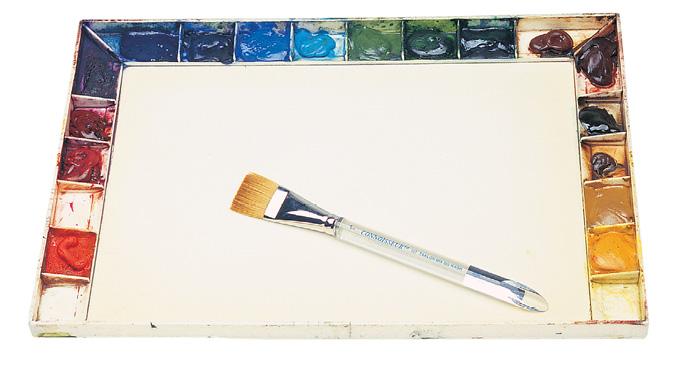
Placing Colors
Pictured is my preferred palette, the John Pike palette. My warm colors are on the left, blues and greens across the top and my earth tones and yellows are on the right. I do not fill all the wells, but use the open wells for an occasional new color. Once you have decided on the arrangement of your pigments, keep it that way for every palette you make up.
Brushes
The success of what or how you paint depends on the brushes you use. Use what you can afford and works for you. My brushes consist of a couple of kolinsky sables (1-inch [25mm] flat, no. 10 round) and a variety of synthetic brushes. Sizes range from a no. 10 round to a no. 2 round. The flats are -inch (12mm), 1-inch (25mm) and 2-inch (51mm) synthetics. I generally return to the same old favorites.
Pick brushes for the job they do. Flat brushes hold a lot of paint or water and are the workhorse for wet-into-wet washes. Use large flats for wet-into-wet washes or small flats for fine detail work. They are good for creating texture or, if a bit worn and blunted, to lift out areas. Rounds hold a lot of fluid because of their shape.
Each area of your painting will require a specific brush. Always start with the largest brush possible. Switch to smaller brushes for detail as the painting progresses. Your painting style and technique will develop and be enhanced according to how you use your brushes.
Synthetic Brushes
Synthetic brushes are affordable and less intimidating than natural fiber brushes. They wear out faster, but the low cost helps make up for that. I like the springy, resilient quality of a good synthetic brush and use them almost exclusively. I tend to be a rough painter and do not mind buying brushes a little more often.
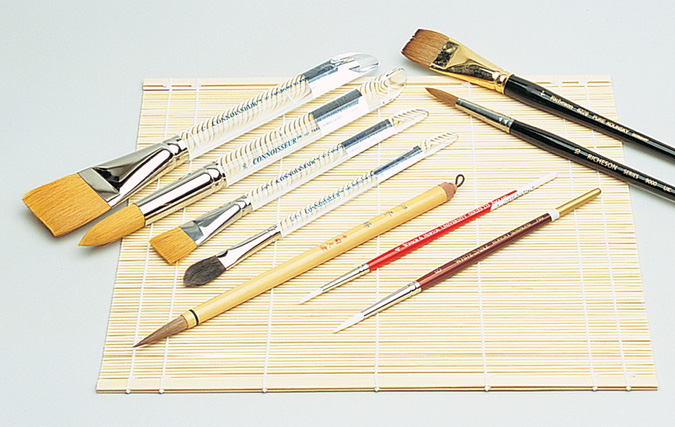
Flat and Round Brushes
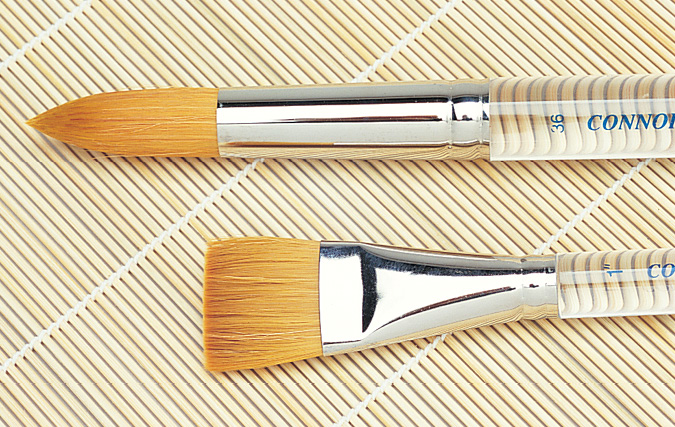
Brush Quality
Brushes should have good shape and constructionno shedding or bent hairs. If the handle is wood, it should be lacquered. The ferrule should be seamless.
Natural Brushes
Natural fiber brushes are made of anything from kolinsky sable to goat hair. Sable brushes retain water best and have a springy point. The natural fiber brushes are expensive but have long life, great water retention and spring.
Brush Care
- Do not leave brushes tip down in a water container. This breaks the ends of the fibers and also bends and twists them out of shape.
- Wash your brush with mild bar or liquid soap to remove paint that would dry and break hair or fibers of the brush. Doing so also keeps unwanted pigment from building up in the belly of the brush.
- Form your rounds to a point and your flats to a square before you store them to dry.
- To enhance the longevity of your brushes, use an old round for mixing paint on your palette.
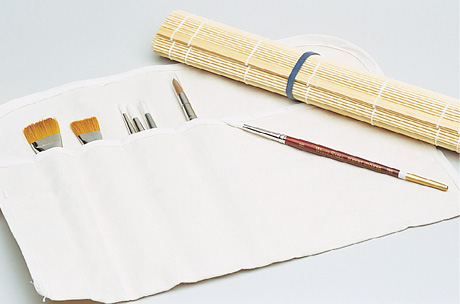
Transporting Brushes
Proper transportation of your brushes is important. Do not just lay them in your box or carrier. The brushes will bounce around and the tips and edges will get damaged. Use a brush holder that separates brushes individually. Place them separately on a bamboo place mat as you roll it up. Use a strong rubber band to keep it rolled.
